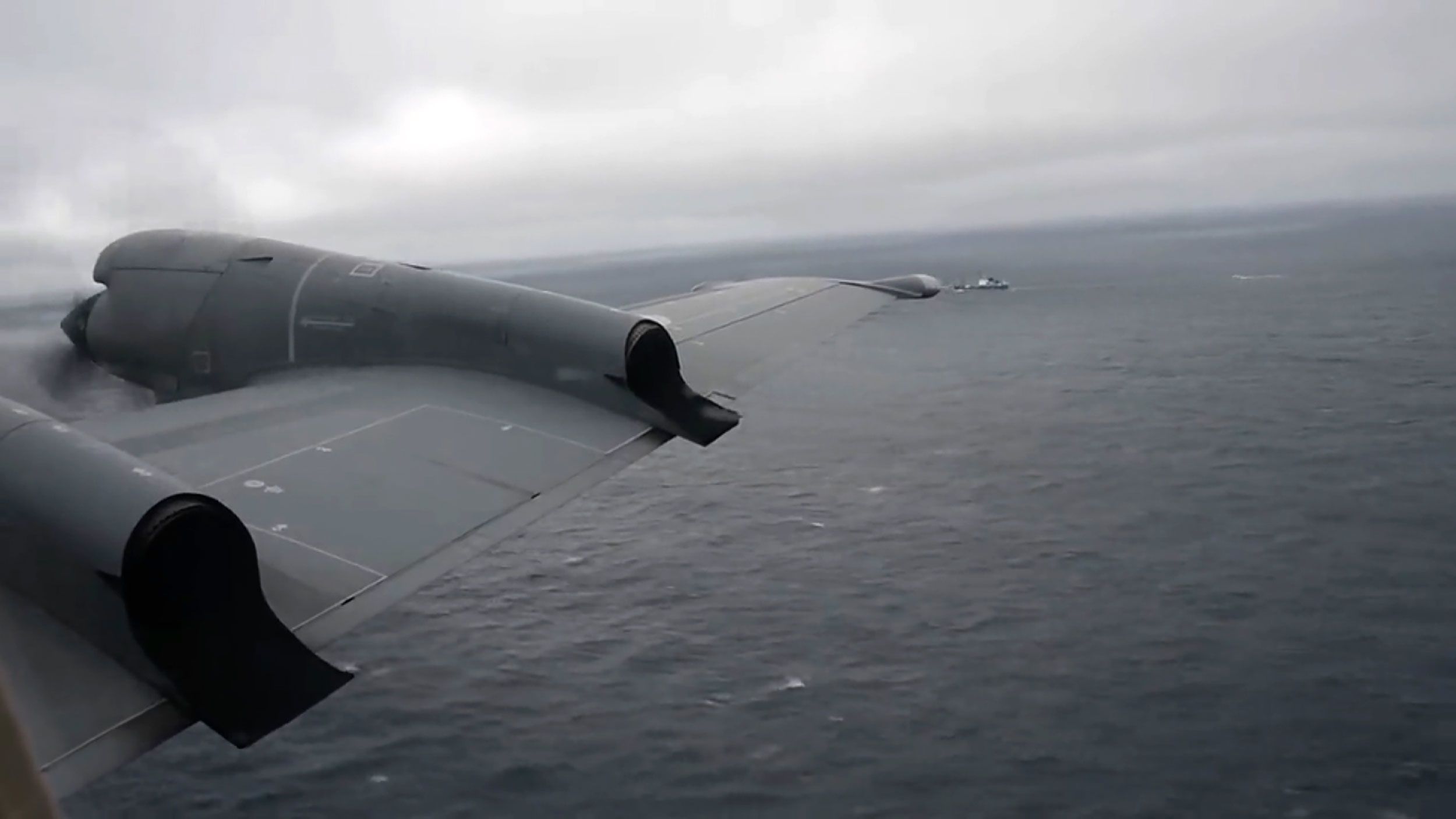CNN — After a dayslong, massive search for a Titanic-bound submersible that captured international attention, US authorities announced the vessel had suffered a “catastrophic implosion” – and new information from a US Navy source helps shed light on when that disaster may have unfolded.

A screengrab from a Canadian Armed Forces Operations video released on Wednesday shows search efforts for the OceanGate Titan submersible.
All five people aboard the submersible, known as the “Titan,” were killed, the US Coast Guard said in a Thursday news conference. The tail cone and other debris from the missing submersible were found by a remotely operated vehicle about 1,600 feet from the bow of the Titanic, which rests about 13,000 feet deep in the North Atlantic Ocean.
“The debris is consistent with a catastrophic implosion of the vessel,” US Coast Guard Rear Adm. John Mauger, the First Coast Guard District commander, told reporters.
A senior Navy official told CNN the Navy detected an acoustic signature consistent with an implosion on Sunday in the general area where the vessel was diving and lost communication with its mother ship.
The Navy immediately relayed that information to on-scene commanders leading the search effort, and it was used to narrow down the area of the search, the official said Thursday.
But the sound of the implosion was determined to be “not definitive,” the official said, and the multinational efforts to find the submersible continued as a search and rescue effort. The Wall Street Journal was first to report about the acoustic signature picked up by the Navy.
Minutes before the US Coast Guard news conference, OceanGate Expeditions, the company that operated the deep-sea submersible, issued a statement grieving the five men on board.
“We now believe that our CEO Stockton Rush, Shahzada Dawood and his son Suleman Dawood, Hamish Harding, and Paul-Henri Nargeolet, have sadly been lost,” OceanGate said in a statement.

“These men were true explorers who shared a distinct spirit of adventure, and a deep passion for exploring and protecting the world’s oceans. Our hearts are with these five souls and every member of their families during this tragic time. We grieve the loss of life and joy they brought to everyone they knew.”
The news ends a saga that began Sunday when the Titan began its descent to explore the wreckage of the Titanic. The expedition was billed as “a chance to step outside of everyday life and discover something truly extraordinary” and cost each participant $250,000, an archived version of OceanGate’s website shows.
However, the cramped vessel lost contact with its mother ship about 1 hour and 45 minutes into its dive and did not surface as expected, prompting an extensive search and rescue operation in a remote area several hundred miles southeast of Newfoundland.
The expedition reflects the ongoing fascination with the Titanic more than a century after it hit an iceberg and sank on its maiden voyage, killing more than 1,500 people. The journey was also part of the growing business of wealthy adventure tourism, along with the space flights of Blue Origin or the rise of guided tours to Mount Everest.

The focus on the vessel renewed criticisms of OceanGate’s approach to safety from employees and other industry leaders. The 23,000-pound deep-sea vessel was made of an experimental combination of carbon fiber and titanium and relied on decidedly low-tech parts, such as a video game controller.
Officials will now be tasked with answering more questions, including piecing together what exactly happened and how to best prevent it from happening again.












